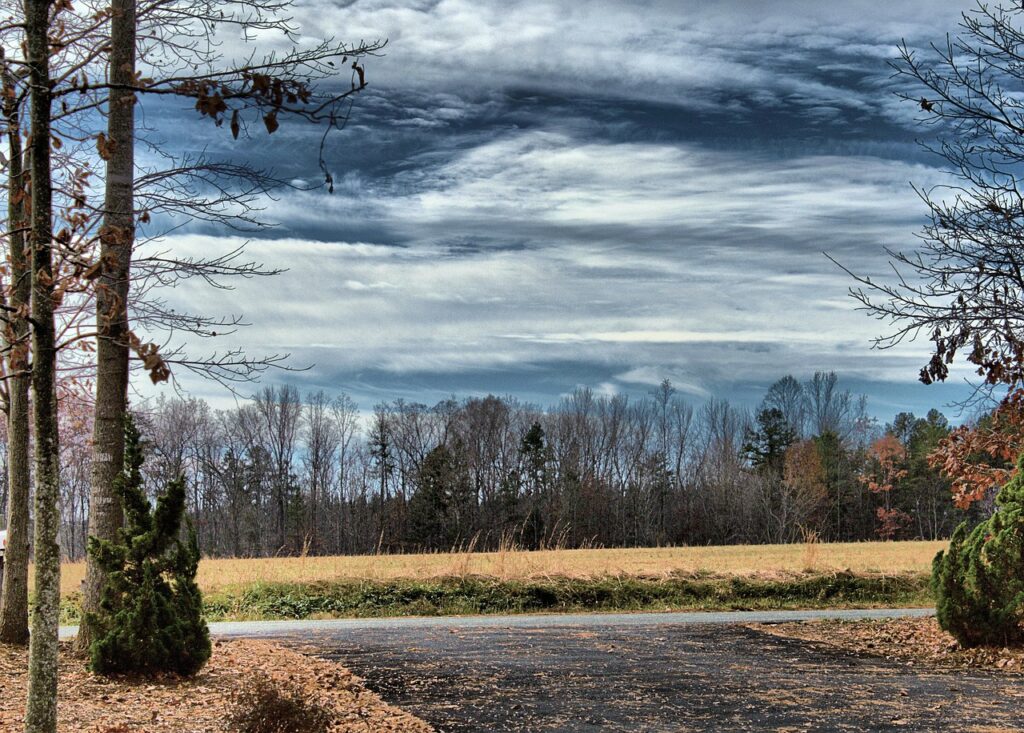One of my goals with these articles is to make them straight forward and easy to understand. This allows people with different backgrounds and experience levels to benefit from them.
This article will cover things to consider when picking the best time to seal your driveway.
A few things to consider when deciding what time of the year to seal your driveway.
- Low/High Temperature
- Wet or Dry Season
- Your Schedule
Low/High Temperature
I believe one of the most important things to consider when picking the time of year to seal your driveway is the low temperature. Driveway sealers are typically emulsions which contain water. You don’t want to place emulsions if there is a chance they could freeze. The other issue with colder temperatures is it extends the setting and curing time of the sealer. This is critical if rain is in the forecast. If the emulsion isn’t set and cured enough the rain can wash it off the driveway.
The high temperature should also be considered. The hotter it is outside, the faster the emulsion will set and cure. This means you will have less time to place the emulsion. Keep in mind if you haven’t sealed many driveways it is going to take you longer than a professional contractor. For this reason, I would recommend people new to sealing avoiding hotter days (greater than 80 degrees) until your get the hang of it. If you need to seal on a hotter day, then I would recommend starting in the morning. If you start in the early morning, make sure the pavement is dry. The hotter temperatures are great for drying off your pavement, but you should use caution when applying sealers. Every product is different so you will have to follow the manufacturers recommendations.
Wet or Dry Season
Depending on where you live, there may be certain times of the year where it rains more often. Pavements and cracks need to be dry before applying asphalt sealers and crack fillers. If you choose a wet time of year, it may be difficult to find a long enough window to allow the pavement to dry and have enough time for the emulsion to set and cure. For this reason, I would recommend trying to seal cracks and driveways sometime during a dryer part of the year. For Wisconsin this is normally during the summer.
Your Schedule
I know life can get busy. A lot of my projects end up getting moved to late summer and early fall because we are busy. I am sure your schedule will be similar. Keep this in mind when you are picking a time to seal your driveway. I would try to find a 3 to 4 day window for sealing your driveway if you want to do it correctly (see my other articles). You will need to seal cracks and repair deteriorated areas before applying the sealer. Make sure you follow the manufacturers recommendations for cure time on the crack sealer. I would recommend doing the crack sealing weeks before sealing your driveway. After sealing the cracks, you will need to allow enough time to wash the driveway and allow it to dry. I would recommend doing this at least 1 day before sealing. The driveway needs to be dry before sealing. Then I would count on 1 day to seal your driveway. You will probably not need the entire day, but you want to make sure you leave yourself with plenty of time. Another reason for starting earlier in the day is to allow the sealer to set and cure while the temperatures are warmer. I like to see the emulsion set and curing before the sun starts to go down. This reduces the chances of having issues with the emulsion not curing correctly.
Conclusion
Overall, there are a variety of times you can choose to seal your driveway. I would recommend doing it early or late summer and I would also try to start earlier in the morning. This time of year has hot enough temperatures to dry the pavement rapidly while at the same time you should be able to avoid the really hot temperatures. Whatever time you pick, keep the things discussed above in mind to reduce the risk of having issues.
